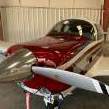Oxygen: Extravagant, Optional, or Essential?
-
Members Online
- gacoon
- Denis Mexted
- Will.iam
- MikeOH
- Meshach
- thomas1142
- PhateX1337
- Jared T
- rturbett
- jamesm
- carusoam
- Joe Linnebur
- Peter T
- Speed Merchant
- Utah20Gflyer
- Alan Maurer
- CaliDreaminMr
- FlyLateNLife
- 00-Negative
- N305EP
- Max3293F
- PT20J
- MB65E
- hubcap
- FoxMike
- N201MKTurbo
- LANCECASPER
- Andy95W
- 231GKY
- theoriginalturk
- takair
- 201er


Recommended Posts
Join the conversation
You can post now and register later. If you have an account, sign in now to post with your account.